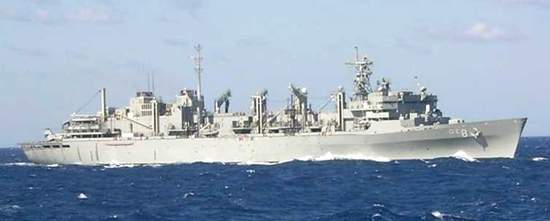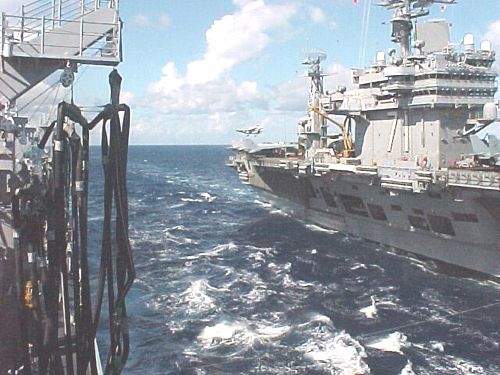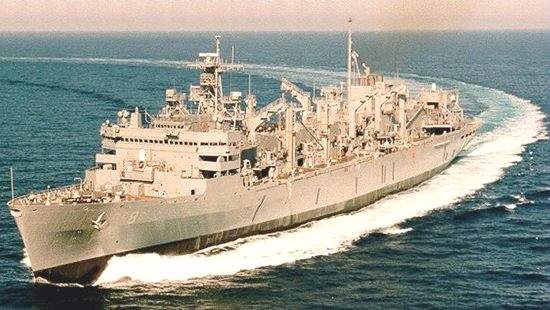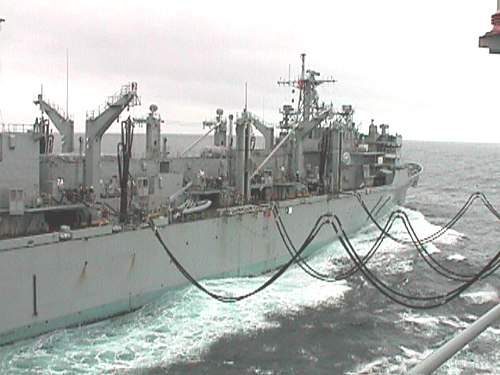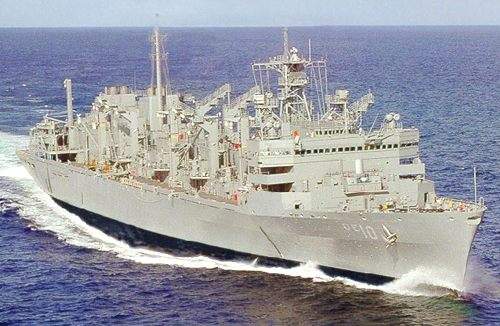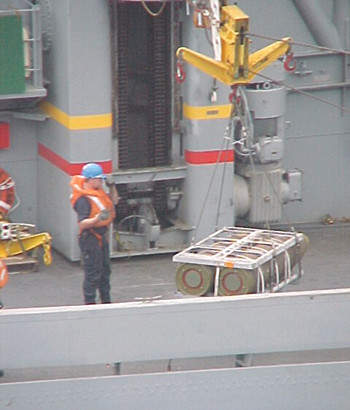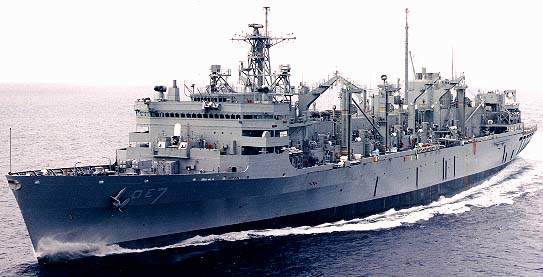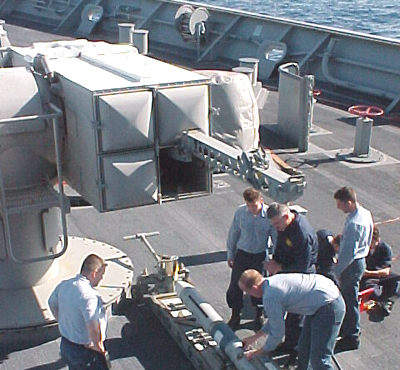The Supply Class fast combat support ships were supplied to the US Navy by National Steel and Shipbuilding of San Diego. Four ships were delivered: the USS Supply (AOE 6) commissioned in 1994, USS Rainier (AOE 7) and USS Arctic (AOE 8) commissioned in 1995 and USS Bridge (AOE 10) commissioned in 1998.
USS Supply was decommissioned in July 2001, transferred to Military Sealift Command (MSC) and returned to service as a USNS (US Naval Ship). USNS Arctic was similarly transferred to MSC in June 2002. Rainier was transferred in August 2003 and Bridge in June 2004. The vessels are active in the MSC Naval Fleet Auxiliary Force and are given the designation T-AOE.
The mission of the ships is to receive ammunition, provision, stores and petroleum products from shuttle ships, and to distribute them to the carrier battle group ships while underway. The ships are fitted with state-of-the-art replenishment at sea equipment.
Supply Class cargo systems
The liquid cargo stowage includes 156,000 barrels of fuel (for example Avcat military kerosene gas-turbine fuel), 500 55gal barrels of lubrication oil, 20,000 gallons of cargo water and a cargo fuel control system.
The dry cargo stowage includes cargo ordnance holds for 1,800t of ammunition, a 400t refrigerated cargo hold, 250t of general cargo and 800 bottles of bottled gas. There is also special cargo accommodation for oversize items such as cable reels and canned jet engines.
The ship is equipped with a comprehensive cargo transfer system with a dedicated cargo control centre. There are five fuel at sea (FAS) stations, six replenishment at sea (RAS) stations, four 10t cargo booms, and a vertical replenishment position for two helicopters. The ship accommodates three US Navy UH-46E Sea Knight helicopters.
Fast combat ship weapons
The fast combat support ships are equipped with the Nato Sea Sparrow mk29 missile launch system. The Sea Sparrow is a surface-to-air missile to provide point defence against aircraft and anti-ship missiles. The eight-cell launcher uses a Raytheon mk23 target acquisition system with dual-mode radar and infrared sensors. The surveillance range of the target acquisition system is more than 60km and the point defence range more than 12km. The Nato Sea Sparrow range is between 15km and 25km.
The ship has two Raytheon Phalanx mk15 20mm close-in weapon systems (CIWS) and two 25mm Raytheon mk88 guns.
Countermeasures
The electronic countermeasures suite is the Raytheon AN/SLQ-32(V)3, which carries out surveillance, missile warning and countermeasures. When hostile signals are detected the processor analyses the pulse repetition frequency, the scanning mode, period and frequency and compares the signal characteristics against a threat library in the computer’s memory in order to identify the threat. The jamming and decoy countermeasures can be set in automatic mode in which case the system identifies a hostile threat and initiates the countermeasures, or in semi-automatic mode where the operator initiates the countermeasures sequence.
There are four decoy launchers, super rapid bloom off-board chaff, SRBOC, six-barrel mk36 from Sippican Hycor. The launchers are equipped with infrared flares and chaff. The ship is also equipped with the AN/SLQ-25 Nixie torpedo decoy, from Argon ST of Newington, Virginia.
Sensors
The ship’s radar suite includes the Raytheon mk23 TAS air search and target acquisition radar, which operates at D-band and the Northrop Grumman AN/SPS-67 air and surface search G-band radar. The navigation radar and collision avoidance system is the I-band Raytheon AN/SPS-64(V)9. The tactical air navigation system is the URN 25. There are two Raytheon mkI/J-band fire control radars.
The ships are equipped with the NAVSTAR GPS satellite navigation receiver system, an Omega navigation receiver and a full communications system.
Propulsion
The four GE LM 2500 105,000hp gas turbine engines provide a speed of 25kt. The cruise speed is 22kt and the range 6,000 miles. There are two shafts with 23ft fixed-pitch propellers. The ship has a total of five service diesel generators. The machinery is managed by a centralised control system.

